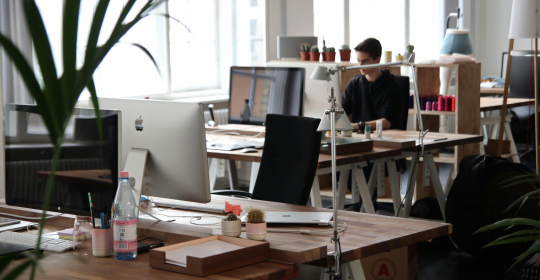With the upheaval of 2020, many employees have dealt with uncertainty about the future and experienced higher than usual levels of stress. And by finding ways to reduce stress levels and improve employee health, businesses are going to find that workers are far more engaged and productive.
These are some of the ways in which employers can promote innovative wellbeing in 2021.
Use wellbeing apps
There’s a whole range of apps available that can offer a fun and engaging way to relieve stress, improve focus, and generally help with wellbeing. Offering your employees access to these wellbeing apps can make a huge difference to their health and in turn, make them feel more valued and increase their productivity.
Two of the most popular apps when it comes to health and wellbeing are Headspace and Calm. As explained in this Guiding Tech article, both apps are very similar. They offer meditation guidance as a way to overcome stress and improve sleep and focus. You have to work through a series of sessions, completing each one in order to move onto the next.
These apps provide an innovative way to support your employees’ wellbeing at a relatively low cost to your business.
Provide wearable wellbeing tech
Wearable technology is one of the biggest new trends when it comes to health and wellbeing. From fairly basic fitness trackers to advanced smartwatches, wearable tech connects with other devices like computers and smartphones to track things like daily step count, your heartbeat, or sleeping patterns.
While many of your employees might already have some form of wearable tech, if you’re looking for ways to promote wellbeing in 2021, one of the most innovative wearables is Hapbee. As recently reported on AiThority, Hapbee is a wearable tech that uses ultra-low-frequency magnetic field technology to stimulate sensations such as alertness, focus, or calmness.
Investing in such wearable tech for your employees offers myriad possibilities, helping them to monitor and maintain their wellbeing so that they can do the best possible job.
Keep work flexible
Many businesses have had to adapt their working practices in the wake of COVID-19, offering remote working and flexible hours. But to take a really innovative approach to your employees’ wellbeing these should become standard and you should look to be more flexible in all aspects of work.
Allow employees to fit their working hours into a schedule that works for them, give them the freedom to work from home when they want to, and encourage them to take time off when they need to, especially when they’re sick.
Flexible working is particularly important for working parents. Allowing them to fit their working hours around their home commitments will ensure that when they are working they’re not distracted.
Employees that don’t feel they can afford to take a day out sick will come in anyway, they won’t at their most productive and there’s a good chance they’ll spread their illness. Some big companies are even starting to offer ‘unlimited’ holiday days — employees have clear targets and deadlines to meet, and as long as that happens they can take time off when they want.
Taking a flexible, reasonable approach to all aspects of running your business will benefit employee’s wellbeing, making them feel trusted and motivated to work hard.
Encourage personal development
Another key part of your employee wellbeing strategy should be to give employees time and resources to develop their current skills or learn new ones. Sign up to learning platforms and training courses for the latest software in your industry, and assign regular training sessions.
Your employees will feel like they are getting something back from your business and be more engaged, and you’ll have a team that’s more skilled and up to date on the latest industry trends.
As more teams work remotely or move between working from home and the office, work-life balance is going to become even more complicated. In 2021 it’s going to be key for employers to find innovative ways to support employee wellbeing, and offer a flexible, understanding approach to work.






